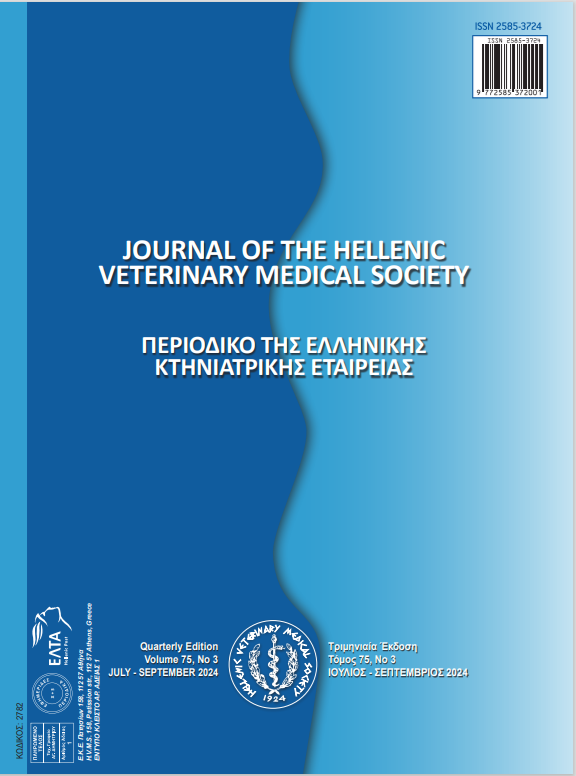Effects of Oregano Aromatic Water (Oreganum onites L.) Supplementation on Diets of Lactating Dairy cows on Milk Production Performance, Metabolic Health and Antioxidative Defense Mechanism
Resumen
This study aimed to validate the effect of oregano aromatic water (OAW) on blood parameters, oxidative stress, and production and composition of milk when used as a feed additive. Thirty lactating Holstein cows (average 570 kg), average 74 days in milk and 2.44 lactation number, were randomly divided into three groups for a period of 60-days. These groups included: (G1) control ration, (G2) control ration + OAW (10 mg/kg of DM), (G3) control ration + OAW (20 mg/kg of DM). Milk production (MP) were unaffected by OAW doses (P>0.05). The supplementation of OAW did not affect the milk composition, and somatic cell count (SCC) (P>0.05). OAW supplementation did not affect blood biochemical values except ketone and glucose. The glucose value increased as the ketone decreased with OAW supplementation (P<0.05). The hematological blood values were not found to be significant. OAW significantly decreased Total oxidant capacity (TOC) and oxidative stress index (OSI) while increasing Total antioxidant capacity (TAC). The current study's findings indicated that OAW can be used as a feed additive to improve cow health and milk production.
Article Details
- Cómo citar
-
Özkaya, S., Taşkın, K., Erbaş, S., Ozkan, O., Neja, W., Tüzün, C., & Şanlı, E. (2024). Effects of Oregano Aromatic Water (Oreganum onites L.) Supplementation on Diets of Lactating Dairy cows on Milk Production Performance, Metabolic Health and Antioxidative Defense Mechanism. Journal of the Hellenic Veterinary Medical Society, 75(3), 7833–7844. https://doi.org/10.12681/jhvms.35646
- Número
- Vol. 75 Núm. 3 (2024)
- Sección
- Research Articles

Esta obra está bajo una licencia internacional Creative Commons Atribución-NoComercial 4.0.
Authors who publish with this journal agree to the following terms:
· Authors retain copyright and grant the journal right of first publication with the work simultaneously licensed under a Creative Commons Attribution Non-Commercial License that allows others to share the work with an acknowledgement of the work's authorship and initial publication in this journal.
· Authors are able to enter into separate, additional contractual arrangements for the non-exclusive distribution of the journal's published version of the work (e.g. post it to an institutional repository or publish it in a book), with an acknowledgement of its initial publication in this journal.
· Authors are permitted and encouraged to post their work online (preferably in institutional repositories or on their website) prior to and during the submission process, as it can lead to productive exchanges, as well as earlier and greater citation of published work.




